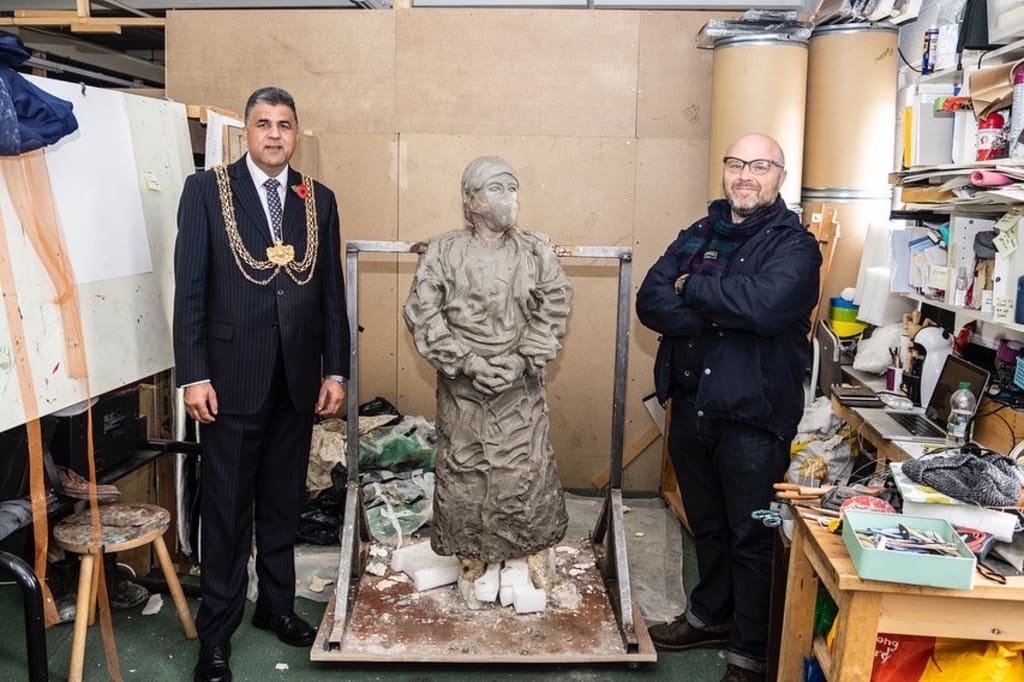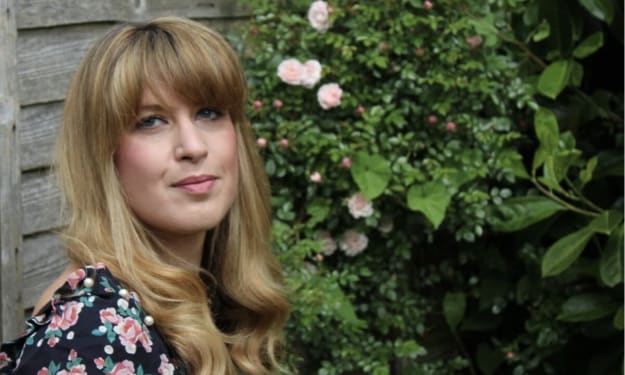You don't need permission to make your art
You just need to begin. That's how the magic happens

The moment of insight
I'm a coach, working with experienced creatives. In a coaching session, there’s sometimes a moment when the client is suddenly very still. Sometimes they’ll go wide-eyed. Often they’ll make a gentle noise, like ‘Huh!’ or ‘ Oh!’ My job then is to simply give them space. They’re having a moment of insight.
During a group coaching session last year, this happened for Paul Digby. He’s a well-established artist living and working in Leeds. And he’d had an idea for a new public sculpture in his home city.
There’s been a lot of debate about statues recently. About who they commemorate, and why much of the UK’s public art celebrates upper-class white men, many with shameful histories in slavery and colonialism. Digby wanted to celebrate a different kind of hero: a nurse, wearing the protective clothing all medical workers laboured in during the Covid-19 pandemic.
By then he had already made a substantial body of work — drawings and sculptures — showing emergency workers in heroic poses more usually seen in classical art. He thought of adding a nurse in PPE during the lockdowns, when he often saw his friend Jane Morgan coming home from her shifts on the Covid wards, looking exhausted. He applied for funding for the project, but wasn’t successful.
You don’t need permission
This was devastating. For a while, he thought the project was over before it had begun. Until his moment of insight, when he realised that he didn’t need permission — or funding — to start making the work.
“It’s not been as easy as if I’d been given funding, because that does take the pressure off,” he says now. “But it’s made me think outside the box and really go for other creative ways to find funding and to engage with communities and other creatives. I can’t depend on public-sector funding, because it’s just not there any more. So I have to look elsewhere.”
His friend Jane decided that she didn’t want to be the subject of the sculpture, suggesting instead Emily Greaves-Brayne. A young nurse who had only just qualified at the start of the pandemic, she ended up working in intensive care throughout, tending the sickest Covid patients.
“This project has meant a lot to Emily,” Digby says. “She’s very politically conscious, and concerned for the future of the NHS.”
An artist never stops learning
Like most creatives, Paul Digby’s career has been a constant journey of development. And progress is now more about making small adjustments than dramatic changes.
“From your course, I’ve got lots of little things that have been useful. Like loosely planning your week out, or giving yourself breaks. Because you can forget to take care of yourself. When you’re a freelancer, work becomes really consuming. Especially when you’re on your own most of the time and that whole starving artist stereotype is always looming!”
He also enjoyed the honest discussions with other creatives. “Some of them seemed so switched on and confident, but they all said they suffer with impostor syndrome, just like everybody else! There’s a lot of bravado goes on in the arts — especially the men.”
The power of asking
The group also reminded him of the importance of reaching out to your network and asking for help. The Yorkshire poet and radio presenter Ian McMillan wrote a poem, and will appear at a fund-raising event for the artwork in October. Journalist Louise Vaughn helped with publicity for the project, getting it onto the front page of The Yorkshire Post. Paul’s local Labour councillor got the Mayor of Leeds involved. Noel Curry, an editor for the BBC, helped create a lovely film interviewing Greaves-Brayne.
So as well as creating a powerful piece of public art, Paul has made new connections and opened up opportunities for future collaborations. “I hope I’ll be able to do the same for other people,” he adds. “If they need my help. It’s about being supportive of one another.”
As for the sculpture, it’s progressing in the pauses between teaching jobs and paid work projects. The clay model is complete, and an artist friend was going to help him fabricate the final piece. They’d ordered all the materials and were ready to start, but then the friend had a stroke. He’s recovering, but it will be a while before he’s back at work. It’s a setback, Paul says, because he doesn’t yet have the skills to do it alone. But he’ll learn.
“It will be good for me to know more about mould-making and casting,” he says. “So I’ll give myself a bit of time and do it gradually. But that’s alright. I’m an artist, and I make stuff. That’s what I do.”
***
Paul Digby is still crowd-funding for the final stages of his nurse sculpture. Donate here. My final 10-week group coaching course this year will start on September 27. It’s for writers, photographers, artists, musicians, makers — and creatives of all kinds. Interested in getting some insights of your own? More details here.
About the Creator
Sheryl Garratt
Sheryl Garratt is a former editor of The Face and Observer magazines, and has written professionally for more than 30 years. She is also a coach working with creatives of all kinds. Find her at thecreativelife.net






Comments
There are no comments for this story
Be the first to respond and start the conversation.